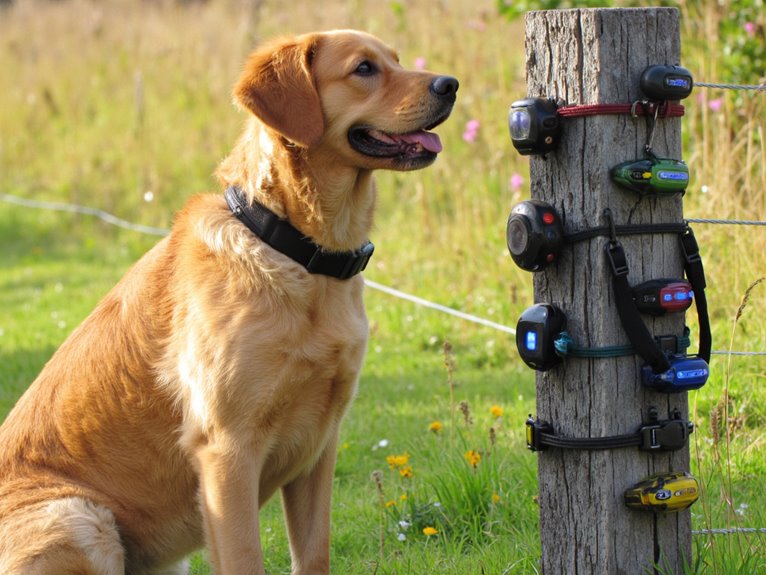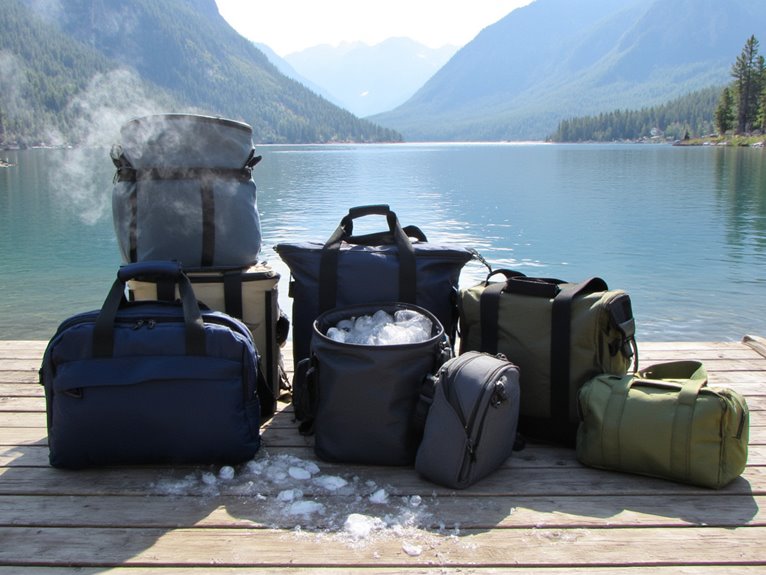Is Hammock Camping More Comfortable?
Hammock camping offers a superior sleeping experience compared to traditional ground camping, primarily due to its ability to alleviate pressure points, promote spinal alignment, and provide a comfortable and restorative sleep. By suspending campers above the ground, hammocks eliminate the discomfort and stiffness associated with sleeping on the ground. Proper hammock setup and ergonomic tweaks can redirect pressure away from sensitive areas, ensuring a restful night's sleep. As you venture into the world of hammock camping, you'll discover the nuances of comfort and practicality that make it an attractive alternative to traditional tent camping – and uncover the secrets to a truly restorative outdoor experience.
We are supported by our audience. When you purchase through links on our site, we may earn an affiliate commission, at no extra cost for you. Learn more. Last update on 21st January 2026 / Images from Amazon Product Advertising API.
The Science of Sleeping Comfort
Research suggests that a person's sleeping comfort is directly correlated with the quality of their sleep, and a staggering 90% of campers cite discomfort as the primary reason for a poor night's rest in the great outdoors.
This highlights the significance of optimizing sleeping comfort when venturing into the wilderness.
Sleeping comfort is influenced by various factors, including support, pressure distribution, and temperature regulation.
A comfortable sleeping setup can greatly impact the quality of sleep, leading to better rest, improved mood, and improved overall camping experience.
Hammock Design and Materials Matter
In terms of hammock camping, the design and materials used can greatly impact the overall comfort and safety of the experience.
The choice of fabric, for instance, can affect the hammock's durability, breathability, and weight.
A well-designed suspension system is also vital, as it can make or break the stability and comfort of the hammock.
Fabric Choice Matters
The fabric chosen for a hammock can substantially impact its overall performance, durability, and comfort, making it a critical consideration in the design and construction of a hammock camping setup.
The ideal fabric should balance weight, strength, and breathability.
Nylon and polyester are popular choices due to their durability and resistance to abrasion and UV degradation.
Ripstop nylon, in particular, is a favorite among hammock campers for its exceptional strength-to-weight ratio.
Look for fabrics with a waterproof and breathable treatment, such as silicone or polyurethane coating, to guarantee a dry and comfortable camping experience.
Ultimately, the right fabric choice can make all the difference in a hammock's comfort and performance.
Suspension System Design
Designing an effective suspension system is crucial to a comfortable and secure hammock camping experience, as it distributes the occupant's weight evenly and guarantees a stable hang.
A well-designed suspension system confirms that the hammock remains level, reducing the risk of tilting or sagging.
This is achieved by using a combination of tree straps, carabiners, and adjustment systems that work in harmony to provide a smooth, secure, and adjustable hang.
The type of suspension system used can greatly impact the overall comfort and security of the hammock camping experience.
A suspension system that is easily adjustable and customizable to individual preferences is essential for a restful night's sleep.
Back Pain Sufferers Rejoice
For individuals who experience back pain, hammock camping can be a game-changer.
By alleviating pressure points, offering a range of sleeping position options, and promoting spinal alignment, hammocks can provide a comfortable and restorative sleeping experience.
In this section, we'll discuss the specific benefits of hammock camping for back pain sufferers and how to maximize these advantages.
Alleviating Pressure Points
Proper hammock setup and ergonomic tweaks can make all the difference in redirecting pressure away from sensitive areas, bringing sweet relief to back pain sufferers.
By adjusting the hammock's sag and hang angle, campers can distribute their weight more evenly, alleviating pressure points on their shoulders, hips, and lower back.
Adding a hammock pad or underquilt can further reduce pressure and provide extra comfort.
Additionally, using a hammock with a built-in footbox or adding a footbox extender can help keep the feet in a neutral position, taking pressure off the lower back.
Sleeping Position Options
One of the significant advantages of hammock camping is the versatility it offers regarding sleeping position options, which can be a game-changer for back pain sufferers who often struggle to find comfort in traditional tent camping setups. Hammocks allow campers to adjust their sleeping position to find ideal comfort, which is especially important for those with back pain.
Some of the sleeping position options available in hammock camping include:
- Sleeping on your side with your legs slightly bent and feet raised
- Sleeping on your back with a slight incline to alleviate pressure on your spine
- Sleeping in a reclined position with your upper body slightly lifted
- Experimenting with different angles and positions to find what works best for your body, finding the perfect comfort zone
Spinal Alignment Matters
Maintaining proper spinal alignment is essential in hammock camping, as it enables back pain sufferers to reap the benefits of comfortable sleeping positions and alleviate pressure on their spine.
When the spine is in its natural curvature, the body can fully relax, reducing strain on the muscles and joints.
In a hammock, this means adjusting the hang angle, sag, and ridgeline to create a neutral spine position.
By doing so, campers can avoid exacerbating existing back issues and wake up feeling refreshed and rejuvenated.
Proper spinal alignment also promotes better breathing, reduces fatigue, and enhances overall sleep quality, making it a crucial aspect of hammock camping for back pain sufferers.
The Ground Is Unforgiving
Sleeping on the ground can be a recipe for discomfort and stiffness, especially for side sleepers, as the unyielding earth fails to cushion the body's pressure points.
The ground's inflexibility can lead to a restless night's sleep, making it difficult to recharge for the next day's adventures.
Some of the specific discomforts of sleeping on the ground include:
- Poor circulation, as the body's weight compresses blood vessels
- Pressure on the hips and shoulders, leading to numbness and stiffness
- Limited mobility, making it difficult to change positions during the night
- Cold seepage, as the ground can be chilly, even with a sleeping pad
Sleeping Above the Elements
By suspending a hammock above the ground, campers can altogether avoid the discomforts associated with sleeping on the earth's unyielding surface.
This raised sleeping arrangement allows campers to sidestep the lumps, bumps, and uneven terrain that can disrupt a good night's sleep.
In addition, sleeping above the elements means campers are less susceptible to dampness, moisture, and cold temperatures that can seep up from the ground.
This is particularly beneficial in wet or humid environments, where ground-dwelling campers may find themselves battling condensation and dampness.
The Weight of Comfortable Sleep
In the pursuit of a restful night's sleep, hammock campers must carefully balance the weight of their comfort-driven gear with the need for a pack light enough to transport comfortably.
While it's tempting to bring along every comfort item imaginable, the added weight can make a significant difference in the overall hiking experience.
To strike a balance, consider the following:
Choose a hammock with built-in insulation or a hammock-specific underquilt to reduce the need for bulky sleeping bags.
Select a sleeping pad that provides adequate comfort without adding excessive weight.
Opt for a lightweight, compact sleeping bag or top quilt.
Consider a hammock-specific bug net that's both effective and lightweight.
Hammock Camping Myths Debunked
Despite the growing popularity of hammock camping, several misconceptions persist, deterring some outdoor enthusiasts from giving this comfortable and convenient approach to camping a try.
One common myth is that hammocks are only suitable for warm weather, when in fact, they can be just as comfortable in cooler temperatures with the right gear.
Another misconception is that hammocks are more expensive than traditional tents, which is not always the case.
Additionally, many believe that hammocks are only for solo campers, when in reality, there are many options available for two-person hammocks.
The Reality of Nighttime Temperature
As hammock campers, we must confront the harsh reality of nighttime temperatures, which can plummet to uncomfortable levels, even in mild climates.
Insufficient insulation and inadequate sleeping bags can quickly turn a peaceful night's sleep into a shivering nightmare.
Understanding the nuances of cold nighttime temperatures, insulation, and wind chill factors is essential to ensuring a comfortable and safe hammock camping experience.
Cold Nighttime Temperatures
One of the most critical factors to take into account when hammock camping is the realities of nighttime temperature, which can plunge dramatically even on warmer days. It's not uncommon for temperatures to drop by 20-30°F (10-15°C) overnight, even in the summer months. This drastic temperature shift can make for a very uncomfortable night's sleep if you're not prepared.
Some key factors to take into account for cold nighttime temperatures include:
Elevation: Temperatures often drop sharply at higher elevations.
Weather patterns: Cold fronts or storms can bring cold temperatures.
Shading: Areas with heavy tree coverage can trap cold air.
Wind: Windy conditions can make you feel even colder.
Insulation and Sleeping Bags
To combat the cold nighttime temperatures, it's imperative to focus on insulation and sleeping bags, as these are critical components in maintaining a comfortable body temperature during the night.
A hammock camping setup should prioritize adequate insulation to prevent heat loss. This can be achieved through the use of underquilts, which provide additional warmth by trapping warm air beneath the hammock.
Sleeping bags, meanwhile, should be chosen based on their temperature rating, ensuring they can withstand the expected low temperatures. A good sleeping bag should also have a comfortable fill power, allowing for a restful night's sleep.
Wind Chill Factor
Frequently, nighttime temperatures can drop drastically due to wind chill, making it essential for hammock campers to factor in this critical element when preparing for a comfortable night's sleep.
Wind chill can make a significant difference in perceived temperature, and ignoring it can lead to a miserable night.
To mitigate wind chill, consider the following:
Choose a sheltered campsite, such as a grove of trees or a natural windbreak.
Use a wind-resistant tarp or hammock shelter to block gusts.
Wear warm, wind-resistant clothing to bed, including a hat and gloves.
Bring a warm, insulated sleeping pad to maintain body heat.
Getting In and Out Matters
As hammock campers soon discover, the ease of getting in and out of their suspended shelters can substantially impact the overall comfort and enjoyment of their outdoor adventure.
A hammock's accessibility can make or break a camper's experience, particularly during nighttime bathroom breaks or when responding to unexpected weather changes.
A well-designed hammock should provide easy entry and exit points, minimizing the struggle to get in and out.
Look for features like large openings, adjustable bug nets, and strategically placed zippers to facilitate smooth passages.
Comfort in Unpredictable Weather
One of the most critical considerations for hammock campers is the ability of their shelter to provide comfort and protection in unpredictable weather conditions.
A good hammock camping setup should be able to withstand various weather conditions, from strong winds to heavy rainfall.
Some key features to look for in a hammock camping setup for unpredictable weather include:
- A waterproof and breathable rain fly or tarp to keep you dry
- A sturdy and wind-resistant hammock that can withstand strong gusts
- Insulation and warm bedding to keep you cozy in cold temperatures
- A bug net or insect repellent to keep biting insects at bay




